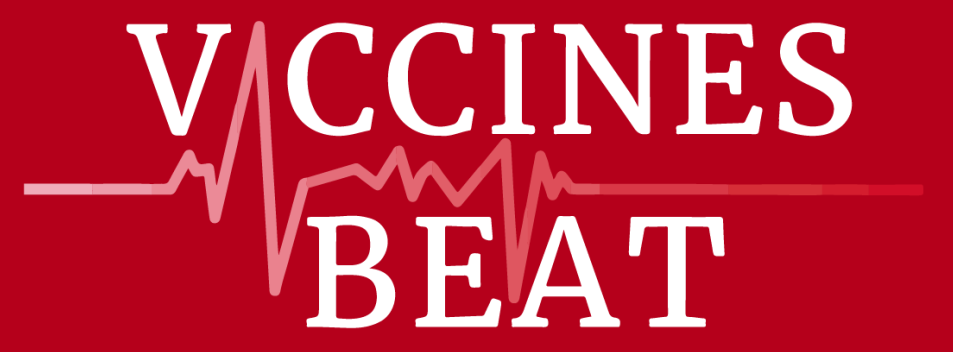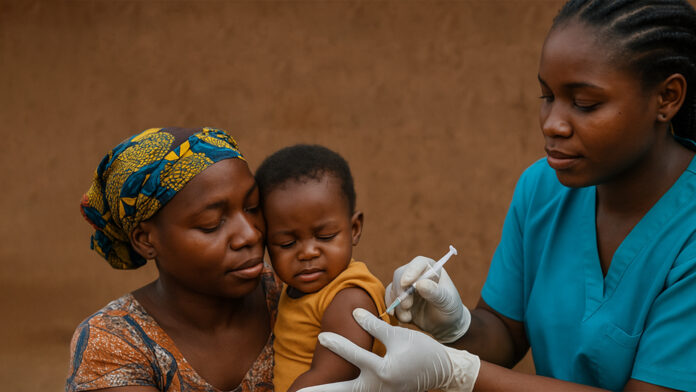Malaria: A Persistent Global Health Threat:
Despite ongoing efforts, malaria is a life-threatening infectious disease caused by Plasmodium parasites (being P. falciparum the most lethal), transmitted to humans through the bites of infected female Anopheles mosquitoes. In 2023, an estimated 263 million cases of malaria were reported globally—an increase of 11 million from the previous year—while malaria-related deaths declined slightly, from approximately 600,000 to 597,000.
Despite decades of progress, malaria remains a major global health challenge. Case incidence relative to the at-risk population was higher in 2023 than in 2019, underscoring the lasting impact of COVID-19-related disruptions to health services.
The burden of malaria continues to fall disproportionately on Africa, particularly among children. In 2023, countries in the WHO African Region accounted for 94% of all malaria cases and 95% of global malaria deaths.
Children remain the most vulnerable. In 2023 alone, approximately 432,000 children in Africa died from malaria, according to WHO estimates.
While malaria ranks as the third deadliest infectious disease globally, its effects extend far beyond mortality. The Plasmodium parasite can remain dormant in the liver for years before entering the bloodstream and triggering symptoms such as severe fatigue, seizures, breathing difficulties, abnormal bleeding, organ failure, cognitive impairment, and vision problems.
The costs of malaria are both direct and indirect. On one hand, there is the substantial investment required to prevent and treat the disease. On the other, the consequences of inadequate control are significant: lost education, lost income, increased caregiving burdens, and an estimated US$ 12 billion in annual lost productivity worldwide.
Malaria Control: Progress and Persistent Challenges:
A major milestone in malaria prevention was the World Health Organization’s October 2021 recommendation of the RTS,S/AS01 malaria vaccine for use in children. Between 2019 and 2023, the Malaria Vaccine Implementation Programme (MVIP) delivered the RTS,S vaccine to over 2 million children across Ghana, Kenya, and Malawi.
Independent evaluations of the pilot introductions in these countries demonstrated substantial public health impact, including:
- A 13% reduction in all-cause mortality among children eligible for vaccination;
- Significant decreases in hospitalizations due to severe malaria;
- Increased access to at least one malaria prevention intervention (either the vaccine or insecticide-treated nets), reaching over 90% of children.
The pilot programme concluded at the end of 2023, and all participating countries have continued their malaria vaccination efforts, marking an important step forward in the global fight against this deadly disease.
Malaria Vaccines: A Major Step Forward in Child Health
Both WHO-prequalified malaria vaccines—RTS,S/AS01 and R21/Matrix-M—have demonstrated safety and efficacy in preventing malaria among young children. Phase 3 clinical trials show that each vaccine reduces malaria cases by over 50% during the first year following vaccination, a critical period when children are at highest risk of severe illness and death. A fourth dose administered in the second year of life helps prolong protection.
When administered seasonally in areas with highly seasonal malaria transmission—and alongside seasonal malaria chemoprevention—both vaccines have been shown to prevent up to 75% of malaria episodes.
The greatest impact is achieved when these vaccines are integrated into a broader malaria control strategy, combining WHO-recommended preventive, diagnostic, and treatment interventions tailored to local contexts.
As of April 2025, 19 countries have introduced malaria vaccination sub-nationally as part of routine childhood immunization programs, with further scale-up planned. With wide implementation, these vaccines are expected to save tens of thousands of young lives each year.
RTS,S has already shown a substantial reduction in malaria illness and mortality in large-scale pilot implementations. While RTS,S and R21 have not yet been compared in a head-to-head trial, both have demonstrated similarly strong protective effects. There is currently no evidence suggesting that one outperforms the other.
Together, the introduction and expansion of both malaria vaccines mark a significant advancement in global child health and malaria prevention.
Scaling Up Malaria Vaccines: Programmatic Considerations, Affordability, and Impact:
The choice of malaria vaccine for use in a country should be guided by programmatic needs, vaccine availability, and cost considerations. To support equitable access, Gavi, the Vaccine Alliance, has introduced a time-limited, exceptional co-financing policy to enhance affordability. Many Gavi-supported countries are expected to pay as little as US$ 0.20 per dose for either RTS,S or R21.
Multiple modeling studies confirm the cost-effectiveness of malaria vaccines using standard health economic metrics. Although R21 is currently priced lower than RTS,S, both vaccines are estimated to be highly cost-effective—comparable to other malaria control interventions and more cost-effective than many childhood vaccines. Costing studies also show that the introduction costs of malaria vaccines are in line with those of other newly introduced vaccines.
WHO prequalified RTS,S in July 2022 and R21 in December 2023, confirming that both meet international standards of safety, efficacy, and quality.
As of April 2025, 19 African countries—including Benin, Burkina Faso, Burundi, Cameroon, Central African Republic, Chad, Côte d’Ivoire, Democratic Republic of the Congo, Ghana, Kenya, Liberia, Malawi, Mozambique, Niger, Nigeria, Sierra Leone, South Sudan, Sudan, and Uganda—have begun integrating malaria vaccines into their routine childhood immunization programmes, aligned with their national malaria control strategies. Several more countries are expected to introduce and expand malaria vaccination throughout 2025. Introduction progress is publicly tracked via the malaria vaccine introduction dashboard.
Demand for malaria vaccines is unprecedented, with at least 30 countries in Africa planning national rollouts as part of their immunization and malaria control efforts. The availability of two WHO-prequalified vaccines—RTS,S and R21—helps ensure a sufficient and stable supply to meet this growing demand.
With wide implementation, these vaccines could save tens of thousands of young lives each year. Modeling estimates suggest that scaling up malaria vaccination in moderate and high transmission areas could prevent up to 500,000 child deaths by 2035.
Malaria Vaccine Implementation Programme (MVIP): Paving the Way for Broader Malaria Vaccine Use:
The Malaria Vaccine Implementation Programme (MVIP) in Ghana, Kenya, and Malawi concluded at the end of 2023, marking a major milestone in malaria prevention. All three countries have continued offering the RTS,S malaria vaccine through their routine childhood immunization programmes, with ongoing support from Gavi, the Vaccine Alliance.
Launched in 2019, the MVIP was designed to assess the real-world public health impact and feasibility of RTS,S vaccine use in high-transmission settings. Over the course of the programme, more than 2 million children were vaccinated across the three pilot countries. The results were significant: a 13% reduction in all-cause mortality among vaccine-eligible children and a notable decline in hospitalizations for severe malaria.
The success of the MVIP and the operational insights gained played a critical role in informing global policy—including WHO’s subsequent recommendation of the R21 malaria vaccine. Lessons learned from the MVIP also helped accelerate the development and deployment of additional malaria vaccines by identifying key implementation strategies and logistical considerations.
The programme was coordinated by the World Health Organization (WHO) and implemented in partnership with the Ministries of Health in Ghana, Kenya, and Malawi, along with PATH, UNICEF, and GSK. Funding was provided by Gavi, the Global Fund to Fight AIDS, Tuberculosis and Malaria, and Unitaid.
Landscape and Classification of Malaria Vaccine Candidates
Malaria vaccine candidates are generally classified according to the stage of the Plasmodium parasite’s life cycle they are designed to target. There are three main categories:
- Pre-erythrocytic vaccines: These target the liver stage of the parasite, aiming to prevent infection before the parasite enters the bloodstream. Examples include:
- Genetically attenuated sporozoites
- Irradiated sporozoites
- Subunit vaccines based on circumsporozoite protein (CSP), such as RTS,S and R21
- Erythrocytic (blood-stage) vaccines: These aim to control parasite replication in the blood and reduce disease severity. They include:
- Subunit vaccines targeting antigens such as apical membrane antigen 1 (AMA-1) and merozoite surface protein 1 (MSP-1)
- Vaccines designed specifically for pregnancy-associated malaria, targeting proteins like VAR2CSA, which mediate placental sequestration
- Transmission-blocking vaccines: These target the sexual stages of the parasite in humans (gametocytes) or within the mosquito vector. While they do not protect the vaccinated individual, they help reduce community transmission by preventing the parasite from developing in mosquitoes after a blood meal.
Each class of vaccine targets a distinct phase of the parasite’s complex asexual and sexual life cycle, using different antigens to elicit stage-specific immunity. Some combination strategies are also being explored to enhance protection across multiple stages of infection and transmission.
Conclusion:
To strengthen global efforts against malaria, future research must prioritize deeper investigations into the complex immunological mechanisms underlying cross-species protection, particularly in endemic regions. Although promising advances in vaccine technologies have emerged, critical challenges remain—chief among them are limited research funding, inequitable access to resources, and the need for stronger collaborative networks across disciplines and borders. Addressing these barriers is essential to accelerate progress. Enhancing the malaria vaccine portfolio and reinforcing existing preventive strategies must remain central pillars in the comprehensive global approach to effectively reduce malaria burden and save lives.
The Malaria Vaccine Coordination Team (MVCT)—co-chaired by Gavi and the WHO—convenes key stakeholders such as the Global Fund, UNICEF, PATH, the World Bank, and the Africa Centers for Disease Control and Prevention (Africa CDC) to align and coordinate immunization strategies. While this collaborative platform is crucial, continued efforts are needed to strengthen strategic and operational coherence across partners to maximize impact.
Bibliography:
- WHO: Malaria vaccines (RTS,S and R21). https://www.who.int/news-room/questions-and-answers/item/q-a-on-rts-s-malaria-vaccine.
- Gavi: Rolling out vaccines to beat malaria together: Time to harness the power of immunisation for a malaria-free future. https://www.gavi.org/news-resources/resources/knowledge-products/rolling-out-vaccines-beat-malaria-together-time-harness-power-immunisation-malaria-free-future.
- A landscape review of malaria vaccine candidates in the pipeline. Trop Dis Travel Med Vaccines 2024; 10. https://doi.org/10.1186/s40794-024-00222-3.
- World Health Organization. Global Technical Strategy for Malaria 2016–2030; World Health Organization. Geneva, Switzerland; 2015.
- Malaria Elimination: time to target all species. Am J Trop Med Hyg. 2018;99(1):17–23. https://doi.org/10.4269/ajtmh.17-0869.
- Review of the Current Landscape of the potential of nanotechnology for future Malaria diagnosis, treatment, and vaccination strategies. Pharmaceutics. 2021;13(12):2189. https://doi.org/10.3390/pharmaceutics13122189.
- Malaria vaccine design: immunological considerations. Immunity. 2010;33(4):555–66. 10.1016/j.immuni.2010.10.005.
- Malaria vaccines: recent advances and New Horizons. Cell Host Microbe. 2018;24(1):43–56. https://doi.org/10.1016/j.chom.2018.06.008.
- Malaria vaccine technology roadmap. Lancet. 2013;382(9906):1700–1. 10.1016/S0140-6736(13)62238-2
- PATH: The Future of Malaria Vaccines: Innovation, Access, and Impact. https://www.path.org/our-impact/articles/the-future-of-malaria-vaccines-innovation-access-and-impact/.







